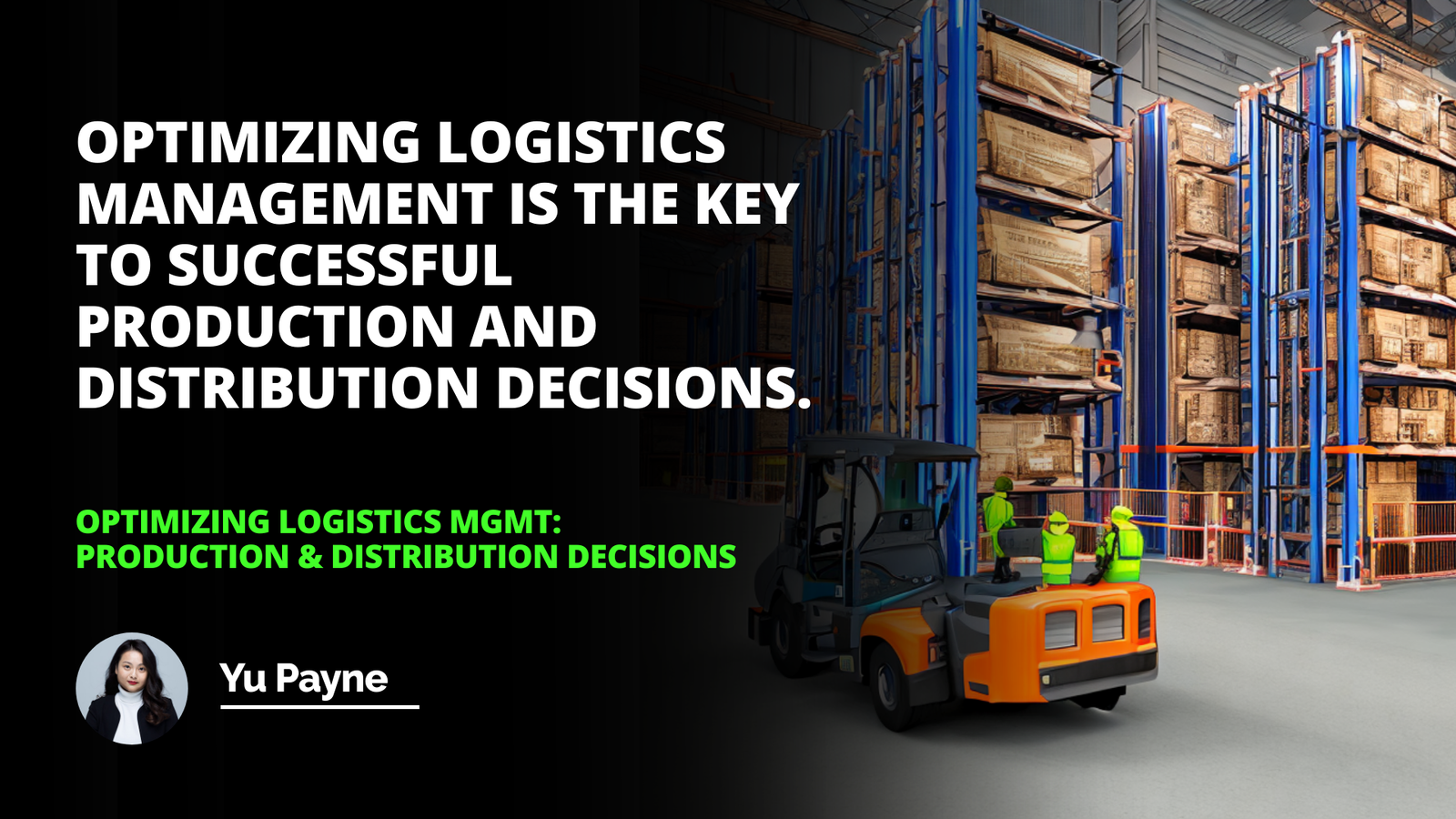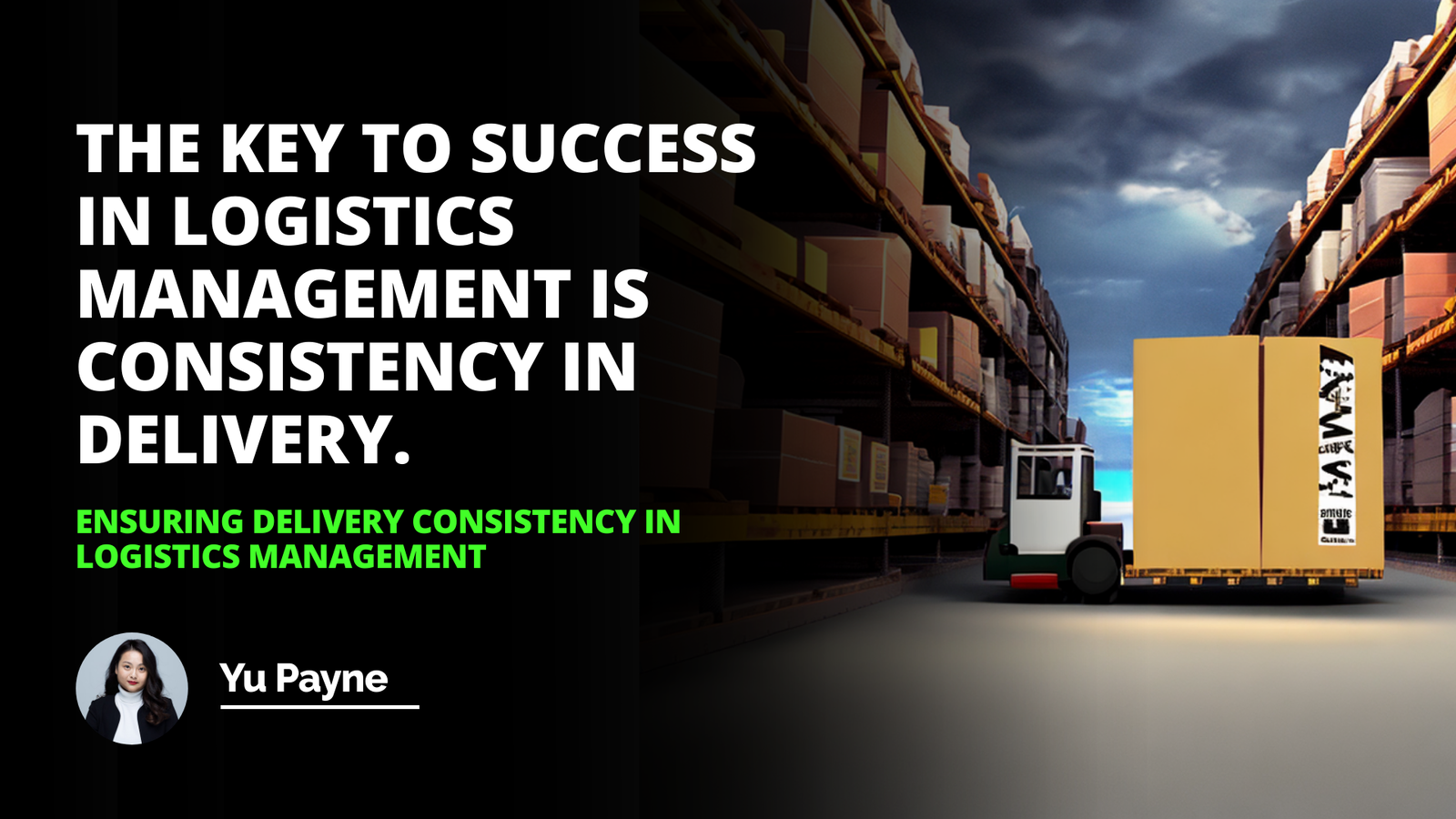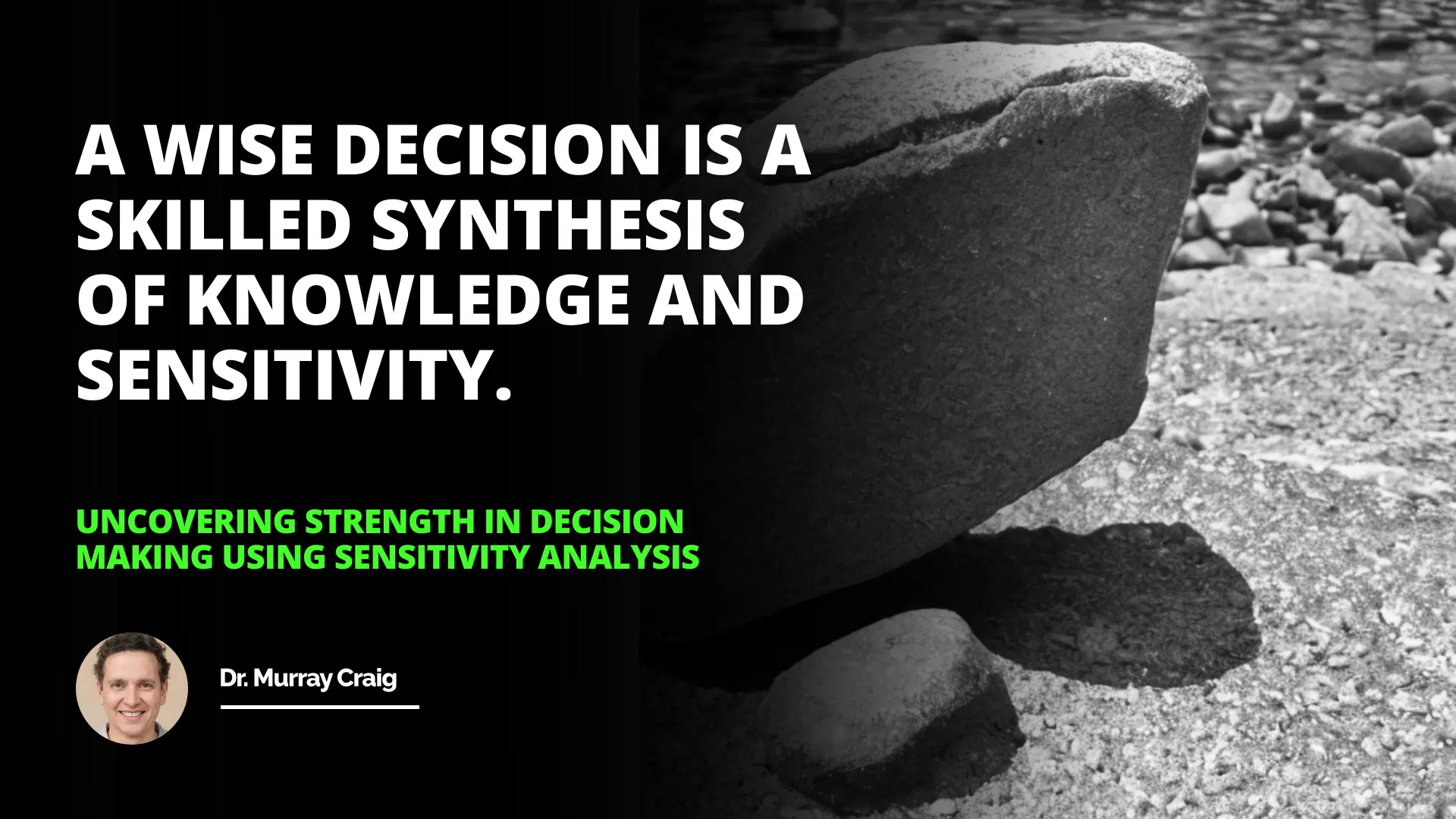
Decision-making is an integral part of our lives, whether it's personal or professional. We are constantly faced with choices that require us to weigh the pros and cons, consider the potential outcomes, and make informed decisions. As a business owner, I have had my fair share of tough decisions to make. One particular instance that comes to mind is when I had to decide whether to invest in a new technology for my company.
What is Sensitivity Analysis?
Identifying Decision-Making Factors
Estimating Probabilities
Calculating the Expected Value
At the time, our company was doing well, but I knew that we needed to stay ahead of the curve to remain competitive. The new technology promised to streamline our processes, increase efficiency, and ultimately boost our bottom line. However, it came with a hefty upfront cost, and there was no guarantee that it would deliver the expected results.
This is where sensitivity analysis came into play. Sensitivity analysis is a powerful tool that helps decision-makers understand how changes in key variables can impact the outcome of a decision. It allows us to identify the most critical factors influencing the result and assess the potential risks and rewards associated with different scenarios.
The first step in conducting a sensitivity analysis is to identify the key decision-making factors. In my case, the primary factors were the upfront cost of the technology, the potential increase in efficiency, the time it would take to implement the technology, and the potential return on investment.
Once I had identified these factors, the next step was to estimate the probabilities of different scenarios. This involved assigning a likelihood to each potential outcome based on available data and expert opinions. For example, I estimated that there was a 75% chance that the new technology would increase our efficiency by 20%, a 20% chance that it would increase efficiency by 30%, and a 5% chance that it would not improve efficiency at all.
Unleashing the Power of Logistics for 30-Minute Pizza Delivery
Analyzing the Impact of Gross Margin Return on Investment (GMROI)
With these probabilities in mind, I could then calculate the expected value of the decision. The expected value is essentially the average outcome weighted by the probability of each scenario occurring. In my case, the expected value of investing in the new technology was a 22.5% increase in efficiency (0.75 x 20% + 0.20 x 30% + 0.05 x 0%).
While the expected value was promising, I knew that I couldn't make a decision based on that alone. I needed to consider the potential risks and the opportunity cost of investing in the technology. This is where sensitivity analysis techniques for risk assessment came into play.
A wise decision is a skilled synthesis of knowledge and sensitivity.
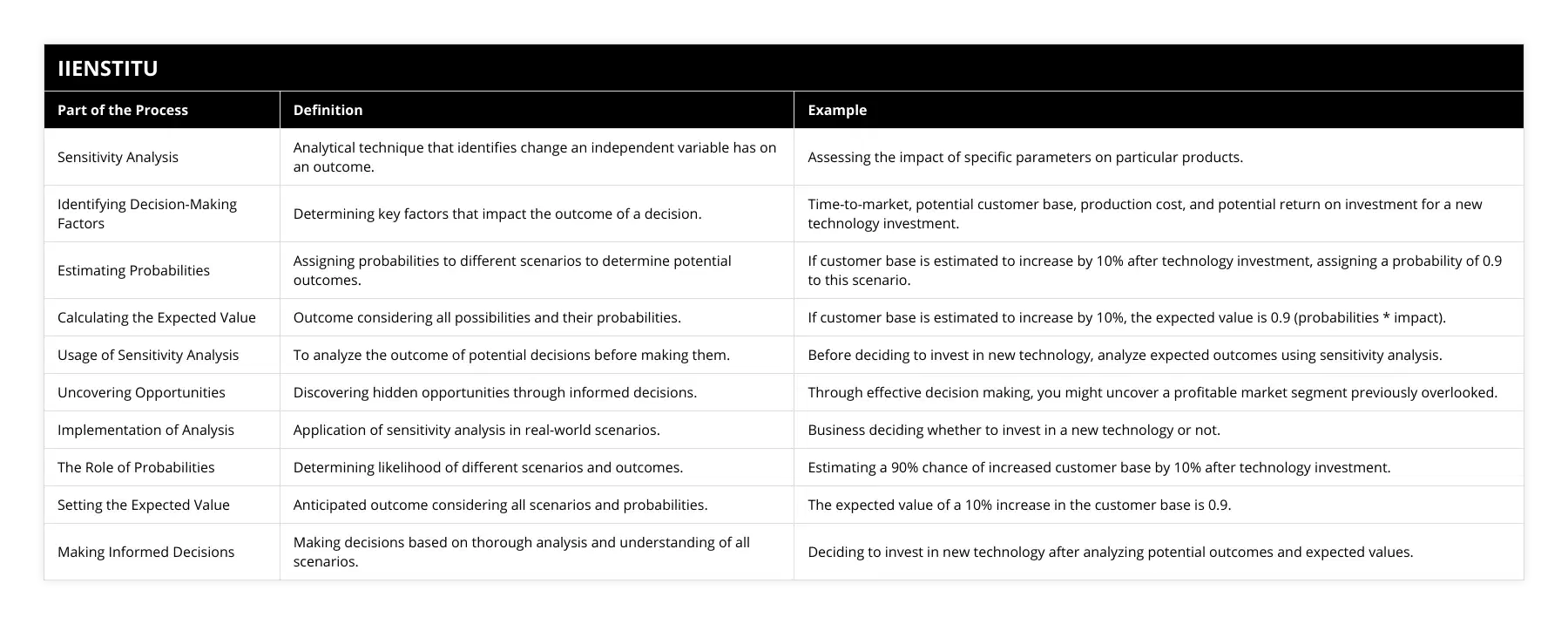
One of the most common techniques is scenario analysis, which involves evaluating the potential outcomes under different sets of assumptions (Investopedia, 2021). For example, I considered what would happen if the technology took longer to implement than expected or if it didn't deliver the promised efficiency gains. By running these different scenarios, I could get a better sense of the potential downside risks and make a more informed decision.
Another important consideration was the opportunity cost of investing in the technology. Every dollar invested in the new technology was a dollar that could not be invested elsewhere in the business. As such, I needed to weigh the potential benefits of the technology against other investment opportunities.
Ultimately, after conducting a thorough sensitivity analysis, I decided to invest in the new technology. While there were certainly risks involved, I believed that the potential benefits outweighed those risks. And so far, that decision has paid off. The technology has helped us streamline our processes, reduce costs, and improve our bottom line.
Of course, sensitivity analysis is not just useful for making business decisions. It can be applied to a wide range of fields, from finance to engineering to medicine. In finance, for example, sensitivity analysis is often used to assess the potential impact of changes in interest rates, exchange rates, and other economic variables on investment portfolios (Chen, 2021).
In engineering, sensitivity analysis can be used to optimize the design of complex systems, such as aircraft or power plants. By understanding how changes in key design parameters can affect the performance and safety of the system, engineers can make more informed design choices and reduce the risk of failures (NASA, 2021).
In medicine, sensitivity analysis can be used to evaluate the potential impact of different treatment options on patient outcomes. By considering factors such as the patient's age, health status, and preferences, doctors can make more personalized treatment recommendations and improve the quality of care (Briggs et al., 2012).
One of the key benefits of sensitivity analysis is that it helps decision-makers identify the most important factors influencing the outcome of a decision. This can be particularly valuable in complex situations where there are many variables at play. By focusing on the most critical factors, decision-makers can simplify the problem and make more informed choices.
For example, consider a company that is deciding whether to launch a new product. There are many factors to consider, such as the potential market size, the cost of production, the price point, and the competition. Using sensitivity analysis examples, the company can identify which of these factors has the greatest impact on the potential success of the product. This can help them prioritize their efforts and allocate resources more effectively.
Another benefit of sensitivity analysis is that it can help decision-makers identify potential risks and opportunities that might otherwise be overlooked. By considering a range of different scenarios, decision-makers can anticipate potential problems and develop contingency plans to mitigate those risks. At the same time, sensitivity analysis can also reveal unexpected opportunities that might not have been apparent at first glance.
For instance, let's say a city is considering building a new public transportation system. By conducting a sensitivity analysis, they might discover that the project is more financially viable than originally thought if they can secure federal funding. This could open up new possibilities for the project and help the city achieve its transportation goals more effectively.
Despite the many benefits of sensitivity analysis, it's important to recognize that it is not a silver bullet. Like any tool, it has its limitations and must be used appropriately. One potential pitfall is that sensitivity analysis can sometimes lead to "analysis paralysis," where decision-makers become so focused on evaluating different scenarios that they fail to take action (Damodaran, 2007).
To avoid this, it's important to use sensitivity analysis as part of a broader decision-making process that includes other factors such as strategic priorities, stakeholder input, and ethical considerations. Sensitivity analysis should inform the decision, but it shouldn't be the only factor considered.
Another limitation of sensitivity analysis is that it is only as good as the data and assumptions that go into it. If the data is incomplete or the assumptions are flawed, the results of the analysis may be misleading. This is why it's important to use high-quality data sources and to validate assumptions wherever possible.
Finally, it's worth noting that sensitivity analysis is not a one-size-fits-all solution. The specific techniques and approaches used will depend on the nature of the decision being made and the available data. Some common sensitivity analysis techniques include:
1- One-way sensitivity analysis: This involves changing one variable at a time while holding all other variables constant to see how it affects the outcome.
2- Two-way sensitivity analysis: This involves changing two variables simultaneously to see how they interact and affect the outcome.
3- Monte Carlo simulation: This involves running many iterations of the model with randomly selected input values to generate a distribution of possible outcomes.
The choice of technique will depend on the complexity of the problem, the available data, and the desired level of precision.
In conclusion, sensitivity analysis is a powerful tool for decision-makers across a wide range of fields. By helping identify key factors, assess risks and opportunities, and evaluate different scenarios, sensitivity analysis can lead to more informed and effective decisions. However, it is important to use sensitivity analysis appropriately, in conjunction with other decision-making tools and considerations.
Ultimately, the goal of sensitivity analysis is not to eliminate uncertainty or guarantee a particular outcome, but rather to help decision-makers navigate complexity and make the best choices possible given the available information. As the statistician George Box famously said, "All models are wrong, but some are useful." Sensitivity analysis is a useful model that can help us make better decisions in an uncertain world.
References:
Briggs, A. H., Weinstein, M. C., Fenwick, E. A., Karnon, J., Sculpher, M. J., & Paltiel, A. D. (2012). Model parameter estimation and uncertainty analysis: a report of the ISPOR-SMDM Modeling Good Research Practices Task Force Working Group–6. Medical Decision Making, 32(5), 722-732.
Chen, J. (2021). Sensitivity Analysis. Investopedia. https://www.investopedia.com/terms/s/sensitivityanalysis.asp
Damodaran, A. (2007). Strategic risk taking: a framework for risk management. Pearson Prentice Hall.
NASA. (2021). Sensitivity Analysis. NASA Cost Estimating Handbook. https://www.nasa.gov/offices/ocfo/functions/modelstools/NASACEHSensitivityAnalysis.html
Frequently Asked Questions
What is sensitivity analysis and how is it used in decision making?
Sensitivity analysis is an essential tool in decision-making, providing insight into the potential outcomes of different decisions. Sensitivity analysis evaluates how the findings and results are impacted by changing input variables' assumed value or the assumptions of considerations and scenarios. In broader terms, sensitivity analysis tests the robustness of decisions made under certain conditions. It helps to identify a decision's "critical" variables and the ultimate impact of variations in their assumed value.
In decision-making, sensitivity analysis answers' what-if' scenarios, helping to focus the decision-makers attention on the most critical variables. It helps to identify a 'tipping point' for different decisions, i.e., when changes in one or more key variables have the effect of reversing the decision-maker's preferred outcome. It also helps to identify preferences and biases in decision-making, such as the impact of subjective and personal values on the decision process and development.
Sensitivity analysis involves various analytical tools and techniques, including probability, linear and non-linear optimization, and Monte Carlo simulations. The selection of the specific methods used depends on the nature of the decision-making problem, the uncertainty of the data inputs and assumptions, and the computation time available. In many cases, a combination of methods may provide maximum accuracy.
Overall, sensitivity analysis provides valuable insight into decision-making. It allows decision-makers to understand the potential outcomes of their decisions better and to make well-informed decisions by considering the impact of possible changes in their assumptions. It is, therefore, a vital tool for making informed and robust decisions.
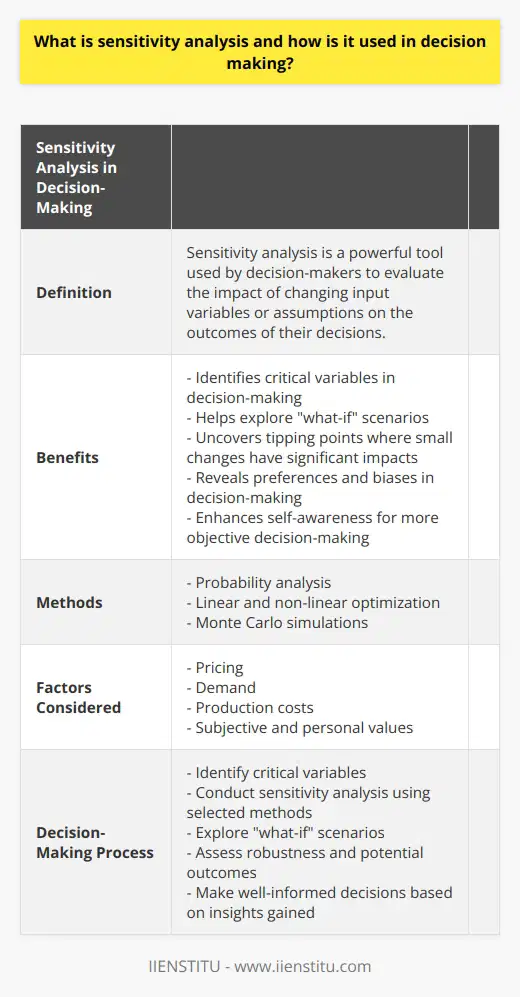
What factors should be taken into consideration when performing a sensitivity analysis?
When conducting a sensitivity analysis, it is essential to consider several factors. This analysis seeks to identify the inputs that are most important to the outcome of a particular model, and understanding and evaluating the various aspects can help ensure the accuracy of the results.
Firstly, the analyst should consider what variables should be included in the sensitivity analysis and which ones should be excluded. A subset of the variables should often be identified, assuming that subgroup members are the most influential. Secondly, selecting the values for each variable is an important consideration. Finally, running a range of discounts will help understand how the outcome varies as the inputs are changed.
Thirdly, another factor to consider is the type of sensitivity analysis. Different approaches can be taken to assess the robustness of the model, including one factor at a time, multi-factor, and probability-based sensitivity analysis. Each technique has advantages and disadvantages, so careful consideration should be taken when selecting the appropriate approach.
Finally, it is essential to interpret the results once the sensitivity analysis has been performed. Factors that play a significant role in the model and those with little to no impact should be identified. Analysis of the results can explain the relationship between the inputs and the output.
In conclusion, sensitivity analysis has many considerations, but understanding these factors will help ensure the study's accuracy. In addition, an analyst can gain greater insight into how the model works by carefully selecting the variables to include, the values, and the methodology and correctly interpreting the results when performing the analysis.
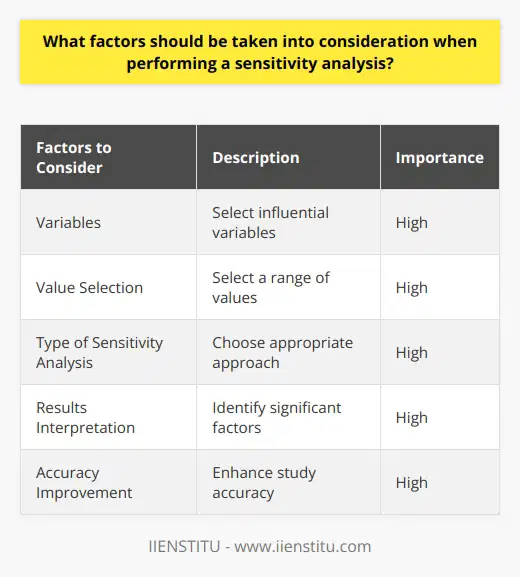
How does a sensitivity analysis enable improved decision making?
The use of sensitivity analysis (SA) has become increasingly popular in the past decade as organizations strive to make efficient use of the limited resources at their disposal. SA helps decision-makers identify and evaluate the potential impact of varying specific parameters in a system or model, providing insight into which parameters can lead to improved decision-making.
At its core, SA involves varying assumptions and criteria within a predetermined set of goals, budgets, or constraints and assessing the system's response to this variation. This allows decision-makers to understand the behavior and development of a system as it adapts to the changing environment. The various outputs of SA can then be used to plan for or for comparison and evaluation against different scenarios.
One of the primary benefits of SA is that it can enable decision-makers to plan for future decisions that may be affected by many different factors, most of which may not be under their direct control. By allowing a better understanding of how other variables can affect a system, decision-makers can assess the risks associated with different scenarios and make informed decisions about which strategy is likely to be the most feasible.
SA also helps reduce risks associated with decision-making by identifying areas of potential risk and reward. This analysis can help decision-makers recognize areas that are or are not critical for the desired results and make decisions accordingly.
Overall, SA provides decision-makers with better information about the system and the environment in which it operates. As SA shows the system's reactions under changing circumstances, it allows decision-makers to take appropriate action to help achieve desired outcomes and make the best use of resources. As such, using SA in decision-making is increasingly widespread and is likely to increase further.

How can sensitivity analysis be used for in decision making?
Sensitivity Analysis in Decision Making
Sensitivity analysis plays a pivotal role in decision making as it helps to assess the influence of different variables on the final outcome. By conducting a sensitivity analysis, decision-makers can identify the most critical factors and focus on them, allowing them to make better-informed choices.
Evaluating Uncertainty
The primary purpose of sensitivity analysis is to evaluate the uncertainty in decisions. It involves changing the values of specific variables to examine how they impact the final outcome. This method enables decision-makers to identify the factors with the most significant effect on the decision and tackle potential uncertainty.
Guiding Resource Allocation
Through utilizing sensitivity analysis, decision-makers can prioritize scarce resources such as time, money, and energy. By identifying the most influential factors, decision-makers can allocate resources effectively to improve the decision-making process and maximize the return on investment.
Improving Model Validation
An essential aspect of the decision-making process is model validation, which ensures that models used in decision making are accurate and reliable. Sensitivity analysis aids in this process by assessing the model's robustness and validity, allowing decision-makers to have greater confidence in their decisions.
Identifying Data Gaps
By using sensitivity analysis, decision-makers can spot data gaps and determine the need for additional data collection. Identifying vital missing information helps strengthen the decision-making process and ensures that decisions are based on the most reliable and accurate data.
Scenario Analysis
Sensitivity analysis enables decision-makers to perform scenario analysis, allowing them to explore different potential outcomes and make more informed decisions. By examining various scenarios, decision-makers can better understand the repercussions of their choices and anticipate potential risks and rewards.
Conclusion
Sensitivity analysis is an indispensable tool for decision making as it allows decision-makers to identify key factors, evaluate uncertainty, guide resource allocation, improve model validation, and conduct scenario analysis. Furthermore, by identifying data gaps and providing insight into potential outcomes, sensitivity analysis significantly contributes to a robust and accurate decision-making process.

What is an example of applying sensitivity analysis?
Example of Sensitivity Analysis Applied: Financial Investment
Sensitivity Analysis in Finance
Sensitivity analysis is a valuable financial and statistical tool that helps investors understand how fluctuations in critical variables, such as interest rates, stock prices, and exchange rates, can affect the overall performance of an investment portfolio or project. One example of applying sensitivity analysis is with business investments involving financial markets.
Implementation in Stock Portfolio Management
When an investor is constructing a stock portfolio, they can apply sensitivity analysis by examining how changes in particular factors, such as market interest rates, would alter the projected returns of the specific stocks under consideration. For instance, the investor could test how sensitive the projected returns are to changes in interest rates by simulating different interest rate scenarios over a specific period.
Identification of Crucial Variables
The investor would then be able to identify which variables have the biggest impact on the potential outcomes and invest in stocks that have a lower sensitivity to such factors. This way, when market conditions change, the portfolio will be more resilient in terms of profitability and the investor will be better prepared to react to market fluctuations.
Risk Assessment and Mitigation
By optimally employing sensitivity analysis, investors can gain an understanding of potential risks and challenges without making inaccurate predictions on the exact movement of market variables. It enables them to mitigate risks, hedge potential losses, and strive to maximize overall returns, despite the ever-changing nature of financial markets.
In conclusion, applying sensitivity analysis to financial investments allows investors to develop resilience against the unpredictable market movements by assessing the potential effects of various variables on their portfolios. Identifying the most sensitive variables helps in making informed decisions and ensures effective risk management, contributing to a more stable and successful financial strategy.
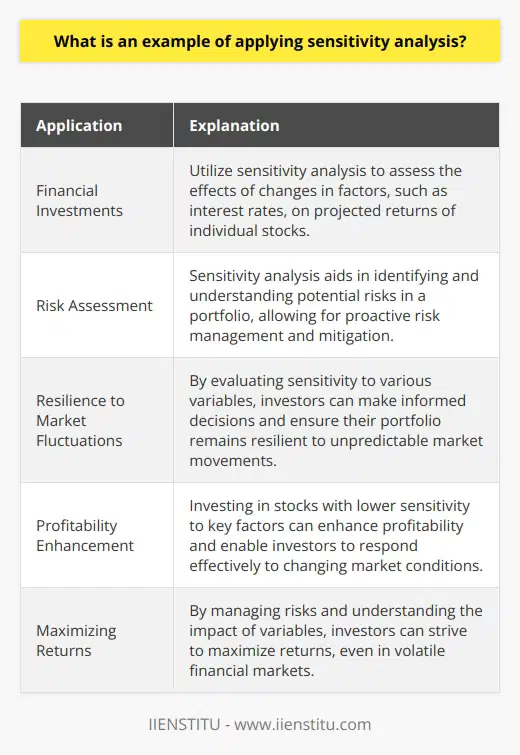
How is sensitivity analysis used to determine the robustness of any given alternative?
Understanding Sensitivity Analysis
Sensitivity analysis serves as a crucial tool in decision-making processes, as it aims to examine how varying input factors impact a particular outcome or decision. In the context of assessing the robustness of a given alternative, sensitivity analysis enables decision-makers to comprehend how changes in uncertain elements can affect the chosen course of action.
Techniques Employed in Sensitivity Analysis
There are several techniques employed in sensitivity analysis, including the one-at-a-time method, local methods, and global methods. The one-at-a-time method involves changing a single input variable while keeping others constant to understand its effect on the output. Local methods explore small variations in input variables around a specified point, and global methods investigate the entire space of input variables.
Identifying Key Variables
A critical aspect of sensitivity analysis is identifying key variables, as prioritizing them allows decision-makers to focus on factors that can cause considerable impacts on the chosen alternative. By performing sensitivity analysis, decision-makers can unveil the variables with the highest influence, often helping in risk management and policy development.
Incorporating Uncertainty
Moreover, sensitivity analysis plays a vital role in incorporating uncertainty when evaluating a given alternative's robustness. By exploring different scenarios based on variations in input variables, decision-makers can gain insight into how the alternative fares under uncertain conditions. This knowledge allows them to assess the alternative's adaptability and resilience to change, thereby providing a measure of its robustness.
Enhancing Decision-Making Confidence
Sensitivity analysis can significantly enhance confidence in decision-making by providing a range of possible outcomes depending on varying input factors. By assessing the variation in outputs, decision-makers can gauge the uncertainty they face and weigh the trade-offs before selecting a particular alternative. The transparency and ease of communication provided by sensitivity analysis results also facilitate informed decision-making among stakeholders.
In conclusion, sensitivity analysis offers invaluable support in determining the robustness of any given alternative. By analyzing variations in input variables, identifying influential factors, examining uncertainty, and strengthening decision-making confidence, sensitivity analysis enables decision-makers to adopt the most adaptive and resilient course of action, ultimately enhancing the overall decision-making process.

